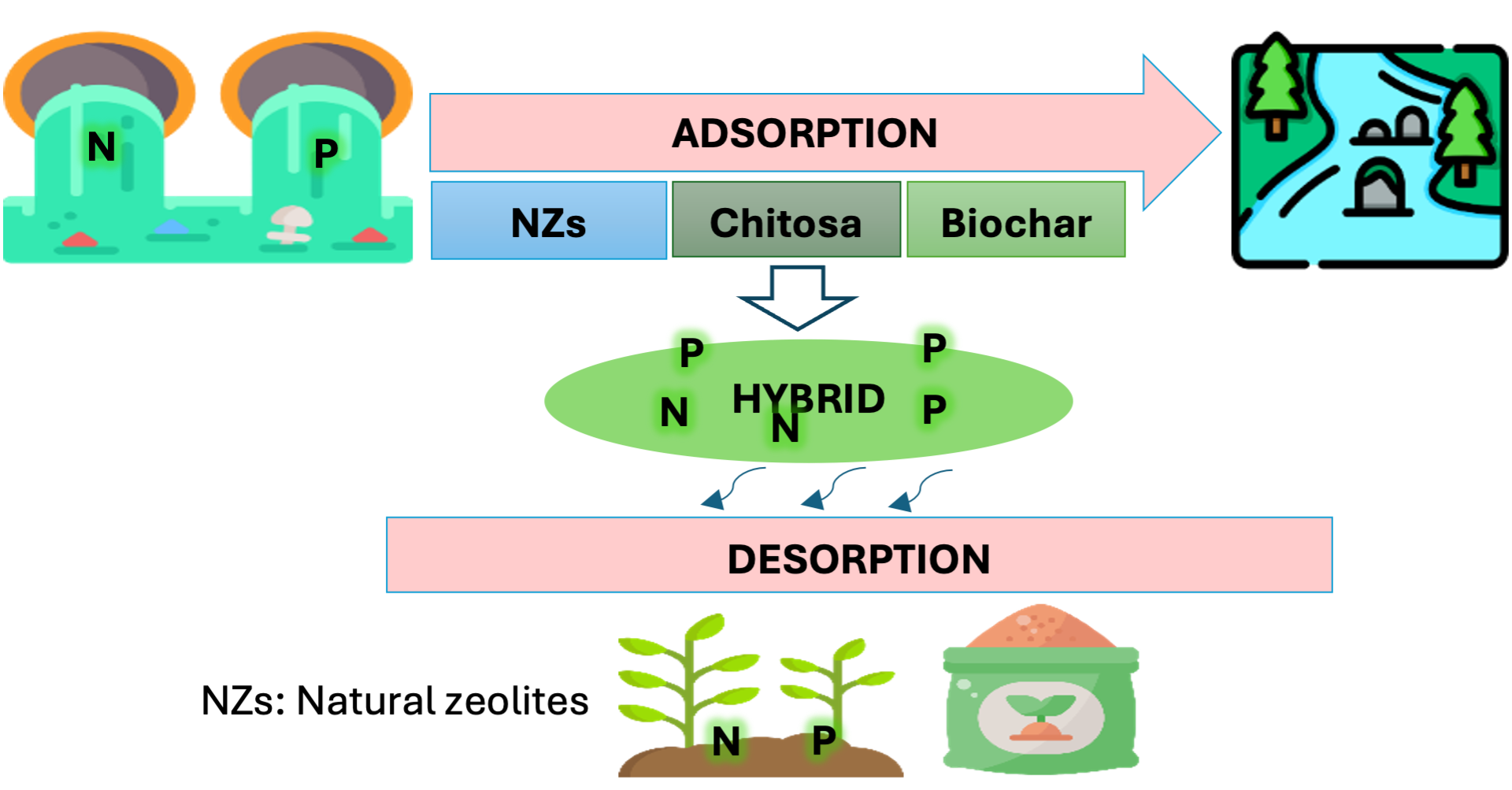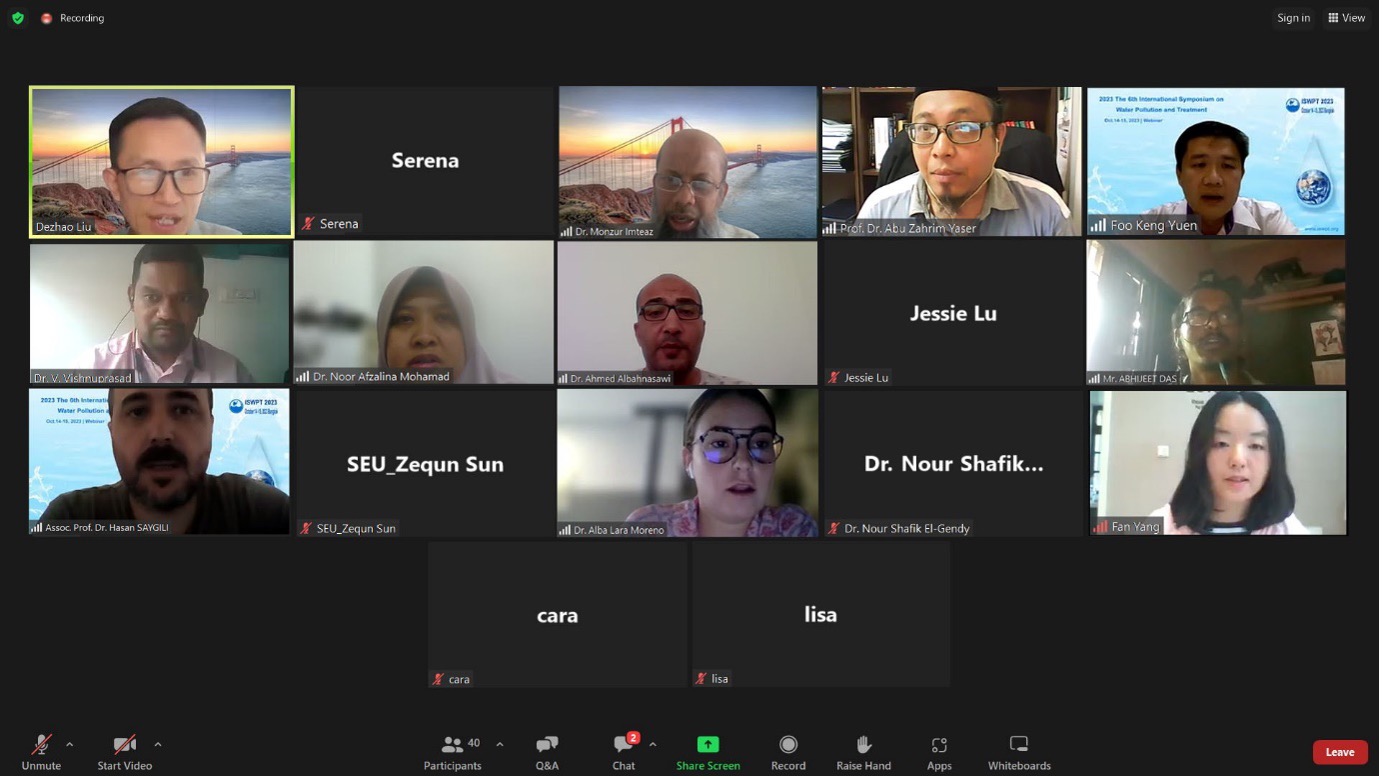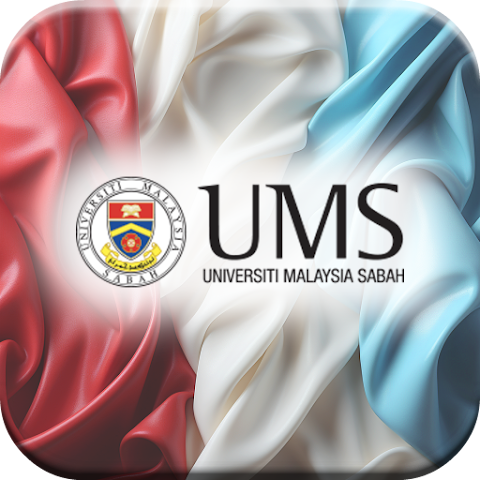Nutrient Recovery Through Adsorption Process

Published: 08 May 2024
Led by Assoc. Prof. Ir. Dr. Abu Zahrim Yaser
The excessive presence of nutrients, primarily nitrogen and phosphorus, has unleashed a menacing ecological domino effect, igniting algal blooms in many water bodies. These algal blooms, though visually striking, bring darkness to the aquatic world, blocking sunlight and depleting oxygen levels. The far-reaching consequences of this phenomenon have given birth to dead zones - regions marked by alarmingly low oxygen levels, causing the death of marine life and severely impacting fishing industries. A study by Walker in 2019 identified more than 700 coastal areas grappling with these issues. Moreover, some algal blooms produce toxins, posing significant health risks to humans who come into contact with these contaminated waters.
The shift from the traditional concept of "nutrient removal" in wastewater treatment to "nutrient recovery" represents a transformative paradigm in environmental management. Instead of merely removing nitrogen (N) through processes like nitrification-denitrification, where it's converted into N2, the new approach focuses on actively recovering N-contaminants such as NH4+ and NO3− and repurposing them into valuable fertilizers. This shift not only mitigates pollution but also offers a dual benefit, enhancing both environmental sustainability and economic gains. By turning wastewater into a resource, we are not just purifying our water systems; we are also creating a sustainable cycle that contributes to the broader goal of resource conservation and responsible environmental stewardship.
Study by Qadir et. al. (2020) reported that the looming surge in wastewater production on a global scale is a cause for concern, with expectations of a 24% increase by 2030 and a staggering 51% rise by 2050 compared to current levels. Within this flow, annual figures reveal the presence of substantial nutrient reserves, including 16.6 million metric tons of nitrogen, 3.0 million metric tons of phosphorus, and 6.3 million metric tons of potassium. Embracing full nutrient recovery from wastewater holds immense promise, capable of offsetting 13.4% of the world's agricultural nutrient demands. Not only does this approach promise environmental benefits, but it also opens the door to a significant revenue stream, with an estimated $13.6 billion globally, including $9 billion from nitrogen recovery, $2.3 billion from phosphorus, and another $2.3 billion from potassium, underlining the economic potential of responsible wastewater management.
In this regard, the Advanced Composting and Waste Processing Lab, known as MyKompos, led by Assoc. Prof. Ir. Dr. Abu Zahrim Yaser has been dedicated to pioneering research in the field since 2016. Our journey began by exploring the potential of various local waste sources for ammonium ion recovery and currently, with a PhD student, Nurliyana Nasuha, we are working on modernite-chitosan adsorbent for sewage application (see top figure). With a firm commitment to sustainable and eco-friendly practices, we have embarked on a journey to harness valuable resources from what was once considered mere waste. By delving into this research, MyKompos aims to not only reduce environmental impacts but also contribute to the development of innovative solutions that can significantly enhance the recycling and recovery of essential resources for a more sustainable future.
Recently, Dr. Zahrim delivered a captivating keynote speech on nutrient recovery at The 6th International Symposium on Water Pollution and Treatment (ISWPT 2023), drawing the attention of experts from the UK, Australia, China, Egypt, Bangladesh, Morocco, and Malaysia (Figure 2). At the University Malaysia Sabah (UMS), our research focuses on the pivotal technique of adsorption. We highlight the ease of controllability, simplicity in operation, and the versatility of adsorption as an effective method for nutrient recovery. However, we are also keenly aware of the challenges associated with adsorption, including the need to achieve high adsorption capacity, reusability, high mechanical strength, and cost-effectiveness. These complexities drive our ongoing efforts to innovate and develop sustainable solutions in this critical field of environmental science and technology. During the conference, the audience inquired about the fate of adsorbents that may contain pathogens after the adsorption process. Dr. Zahrim offered a solution by suggesting that one option for deactivating pathogens is through composting. Final note, with Prof. Nidal Hilal, Dr. Zahrim is editing a book called “Nutrients and coloured compounds in wastewater: Advanced treatment and recovery” published by Elsevier.
Further reading:
https://www.sciencedirect.com/science/article/pii/S2214714420307224
https://onlinelibrary.wiley.com/doi/abs/10.1002/apj.2448
https://link.springer.com/article/10.1007/s40726-023-00275-6

Figure 2 The 6th International Symposium on Water Pollution and Treatment (ISWPT 2023)
Nutrient recovery through adsorption process



